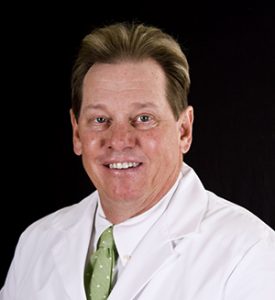- Fast results
- 4,000+ locations
- 4.8 star rating
Need Help? (888) GET LABS



Cancer seems to remain on the top spot when it comes to the most feared health conditions. The news about having cancer is often compared to a life sentence.
For many people, it’s almost taboo to talk about it. And the only time it’s been part of the conversation is when someone you know is diagnosed with cancer.
Nevertheless, it is still crucial to talk about aspects of cancer that you can control. This includes health habits known to prevent cancer development.
While the subject is always out there, the sense of urgency for preventive measures continues to increase.
Surprisingly, the encouragement comes from the fact that cancer death rates continue to decline in the US. In addition, the data is associated with new research about cancer, medical advancement in treatment, and proper information dissemination about its prevention.
And so, in the spirit of providing and reiterating helpful information, check out the habits you can adopt to increase your protection against cancer.
High doses of radiation coming from gamma rays, x-rays, and the like are known to induce cancer formation.
This has been proven by countless studies on the health impact of the Chernobyl nuclear explosion, in which the risks for thyroid cancer among the younger generation were noted.
So, suppose you are working in fields where radiation is often used, such as mining, radiology, and airline screening. In that case, you must check on radiation regulations in your workplace.
Chemical carcinogens are common with industrial agents like benzopyrenes, radon, arsenic, asbestos, cadmium, nickel, diesel exhaust, and silica. Constant exposure to these substances increases your risk of cancer.
Hence, it is wise to constantly check on ingredients or chemicals you bring inside your home.
Likewise, suppose you’re working in an environment where these chemicals are present. In that case, it’s best to consult with your company on the necessary measures that protect you and your colleagues from this type of work hazard.
Tobacco has been known to be a certified carcinogen triggering different types of cancers.
Usually, when you encounter tobacco being linked to cancer, the first thing that comes to your mind is lung cancer.
However, it is apparent that the chemicals in tobacco also influence the development of other types of cancer such as cervical, pancreatic, kidney, and stomach.
Several alcoholic beverages are closely linked to cancer formation. This is further explained by the ability of alcohol to be broken down into a substance called acetaldehyde.
Acetaldehyde prevents the cell from repairing itself. Hence, it continues to multiple abnormally, which eventually becomes cancerous.
According to the CDC, alcohol intake increases the risks for cancers of the mouth and throat, liver, breasts, larynx, esophagus, colon, and rectum.
So, it only makes sense to avoid or at least limit your alcohol intake to protect yourself from cancer.
It has been apparent that nutrient deficiency encompassing vitamin deficiency can cause severe damage to the DNA, which can turn into cancer.
On the contrary, sufficient vitamin intake or production lowers the risk of several cancers.
For example, according to a study by the University of California, adequate vitamin D in the body can help prevent cancers affecting the breasts and prostate.
With that, it’s imperative to ensure enough sun exposure and a balanced diet where all the nutrients needed by the body are acquired.
However, if you suspect vitamin deficiency, taking nutrition and vitamin tests is best for proper diagnosis. This will ensure appropriate prescriptions and programs that will address the problem.
According to John Hopkins Medicine, prolonged sleep deprivation can encourage the abnormal growth of cells leading to tumor formation, which opens the opportunity for cancer.
One mechanism relating to lack of sleep with cancer is high cortisol production. Essentially, if you are sleep-deprived, your cortisol level increases. Cortisol is a hormone released when you are stressed.
High cortisol levels are known to be a risk factor in some cancers such as oral, breasts, and endometrium.
Therefore, a crucial step to prevent cancer is ensuring that you get at least 7 to 8 hours of sleep as frequently as possible.
Exercise and physical activity are often neglected as technology continues to advance. However, despite the progress, this particular consequence affects cancer mortality.
According to a study conducted by the University of Texas, it was reported that those with higher sedentary time have 52% increased risks for cancer than respondents with the least sedentary time.
That being said, it only makes sense to allot a significant amount of time on exercise and other physical activities.
Carcinogens are also commonly found in food products. They are rich in processed meat, sugary drinks, red meat, etc. Not only that, but the manner of cooking also aggravates the carcinogenic nature of some food.
For instance, eating barbecue, grilled, or smoke meat has been found to increase mortality among those diagnosed with breast cancer. It comes as no surprise considering these types of cooked meat are rich sources of a carcinogen called polycyclic aromatic hydrocarbon.
Therefore, it is imperative to avoid or limit foods linked to cancer formation. You can stick with healthier alternatives not just to prevent cancer but improve your health altogether.
It’s a known fact that too much exposure to sunlight is a risk factor for skin cancer. So naturally, this is linked to the intense ultraviolet (UV) radiation from the sun, which mutates the skin cells.
However, UV radiation does not just come from the sun. The use of tan beds is another risk factor.
Hence, it is crucial to stay protected. Wearing sunscreen can help, but limiting your sun exposure during specific times when the UV light is strong can also prevent skin cancer.
It goes without saying, but better to avoid tanning beds altogether as a precautionary measure.
Infections do not simply affect your body for a brief time. While this could be the case for some, other infections and diseases could become the gateway for cancer development.
These infections are high-risk human papillomavirus (HPV), hepatitis B, hepatitis c, and stomach ulcers caused by Helicobacter pylori.
To prevent these infections, it’s always best to practice safe sex. Likewise, you have to ensure that whatever food you eat is prepared in a sanitary condition.
The mechanism of cancer is not so complicated. Your body is made of about 37.2 trillion cells. They get damaged and die naturally through a process called apoptosis. Then they get replaced by new functional cells.
This cycle of life and death is what keeps your body functioning well. But in the case of cancer development, the damaged cells refuse to die. Instead, they multiply in great numbers and hoard the organic and inorganic molecules meant for healthy cells.
Eventually, as the cancerous cells become too crowded, they form separate blood vessels and migrate to other body parts. This process is called angiogenesis.
The formation of blood vessels becomes the tipping point for the spread of cancer which is clinically referred to as metastasis.
Nevertheless, cancer formation is attributed to both genetic and external factors. After all, cancer is triggered by faulty genes which disrupt cell death or reprogram the cycle altogether.
Lifestyle is also a critical contributor to cancer. There are plenty of carcinogens found in food, drinks, and your immediate environment.
Carcinogens are essentially any substance that can cause cancer. It can range from tobacco smoke asbestos to the charred barbecue you eat for dinner.

Angiogenesis and metastasis are often referred to in detecting the stages of cancer. This is because cancer stages depend on how far cancer has spread.
For example, Stage 0 means that cancer has not yet left its tissue origin.
Stage 1 means that cancer has spread on nearby tissues, but the growth is superficial. It is considered the early stage of cancer since the cancer cells have not reached the lymph nodes or other parts of the body.
On the other hand, stages 2 and 3 are characterized by the movement of cancer cells deep into nearby tissues. Furthermore, cancer has also spread to the lymph nodes but not to other body parts.
Stage 4 cancer is also known as metastatic cancer. It is regarded as the advanced stage wherein the cancer cells have already spread to other parts of the body.
For example, a person diagnosed with stage 4 breast cancer could have the condition already expanded in the bones.
There are multiple ways involved in diagnosing cancer. Nonetheless, each process ensures accurate diagnosis, including determining the cancer stage. Here are the medical procedures involved in detecting cancers.
A biopsy is a procedure in which a tissue or tumor sample is taken out and examined in the laboratory. This could be done through a needle or via surgery, depending on the tumor’s location, size, and nature.
Cancer screening includes tests using blood and other bodily fluid samples. Blood tests for cancer screening are specific for tumor markers common on the different types and categories of cancer.
For example, several biomarkers are found in cancers common to men. Therefore, they are often clustered in the Male Cancer Screening Blood Test. Likewise, a sex-specific set of tumor markers are also found in the Female Cancer Screening Blood Test.
Medical imaging like CT scan, MRI, mammogram, ultrasound, and more provide a visual of the growing tumor inside the body. It also helps your doctor understand how grave the cancer is, which determines its stage.
The decline in cancer death rate is a promising progress in dealing with the condition globally. However, you can’t just rely on medical progress and not do your part to prevent its development.
Like any other major health endeavor, a small start is always the key. You can choose to begin with a step or two in the list of healthy habits mentioned above.
It may be challenging to do them together all at the same time, so simply master a few and move on to the others. What’s vital in the process is always consistency.
Nevertheless, another critical preventive measure against cancer is getting tested for the condition. Part of which is getting a proper cancer screening.
Fortunately, you can get the recommended tests through Personalabs.

© Copyright 2025 Personalabs. All Rights Reserved.